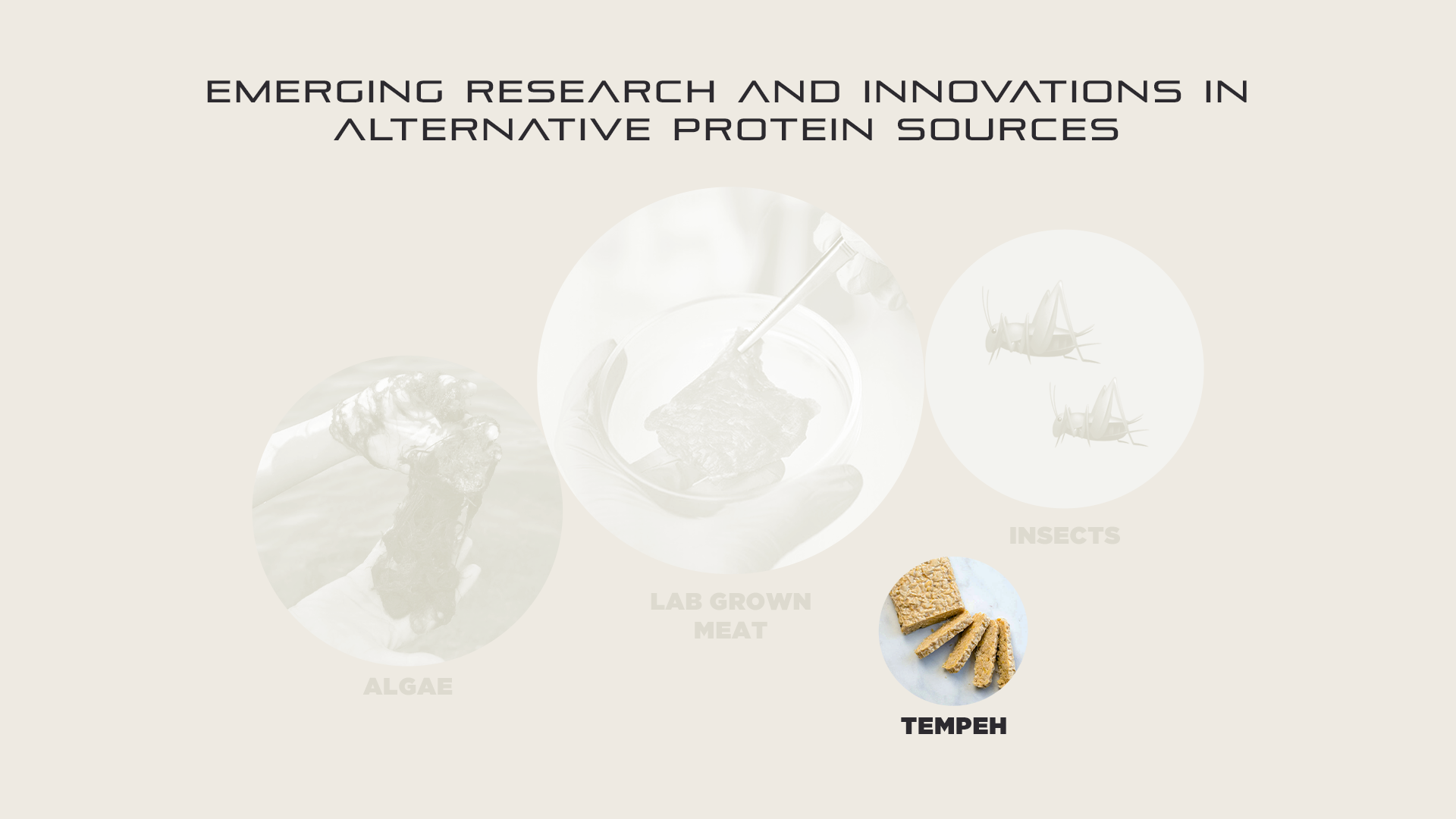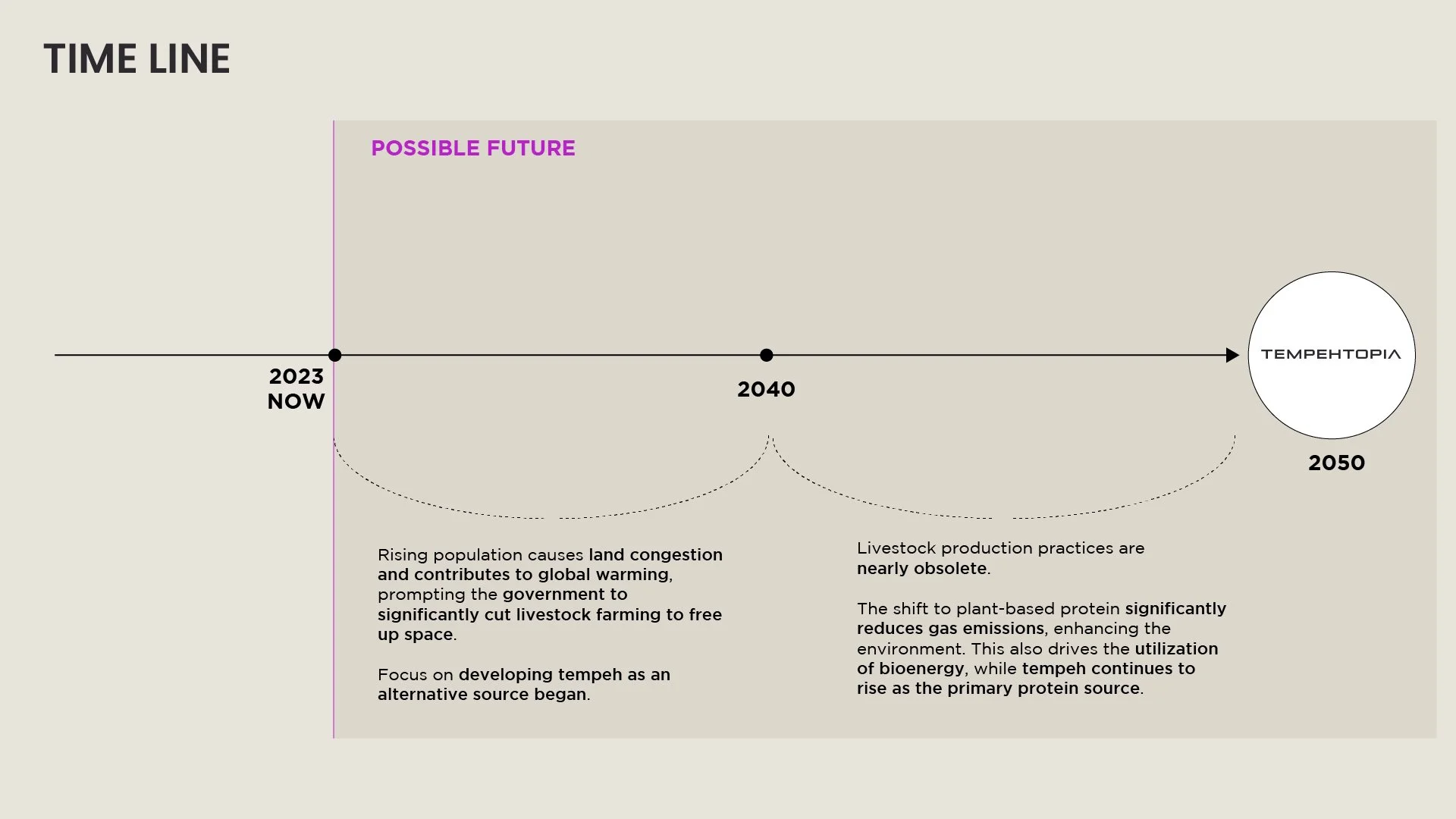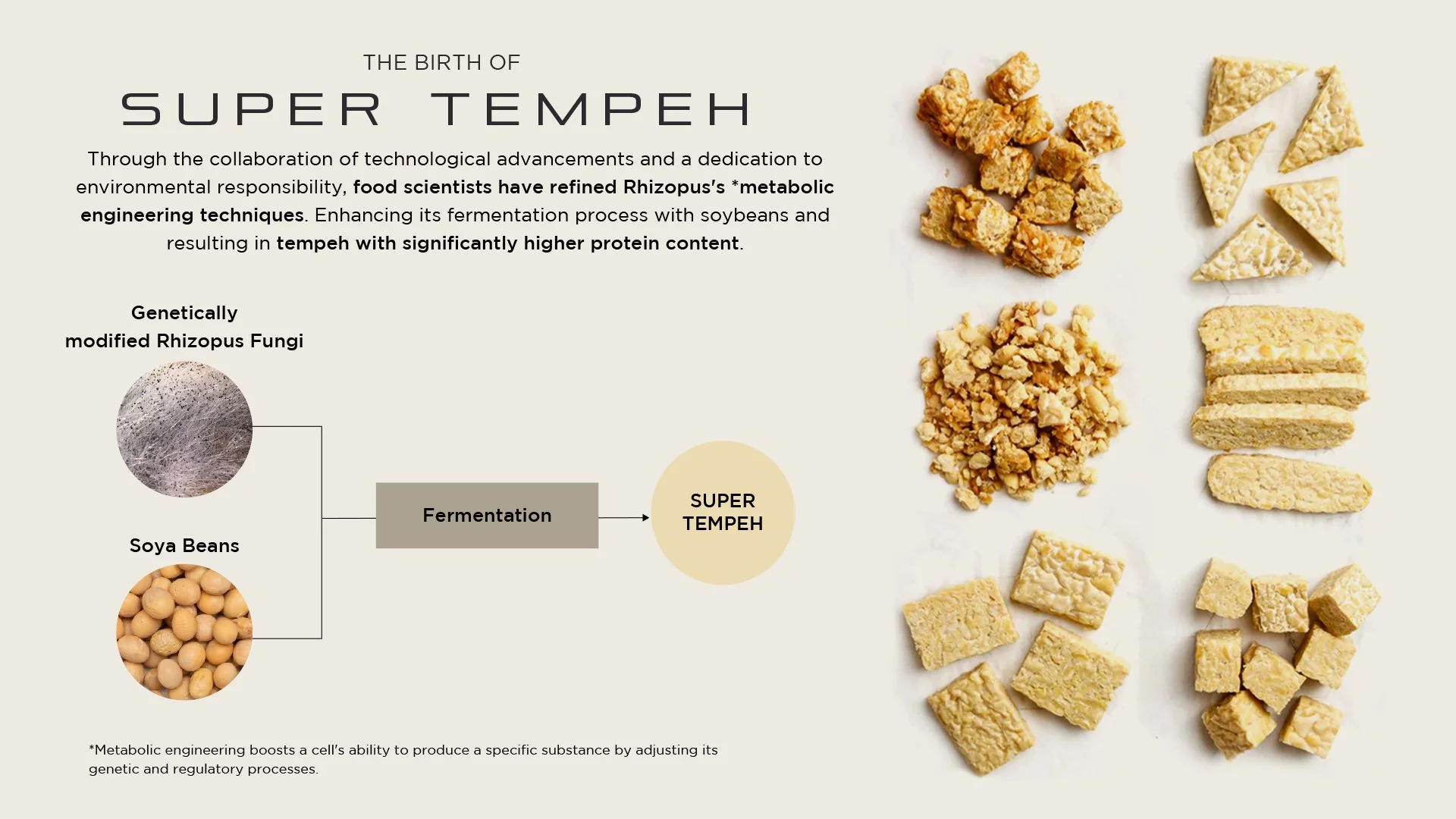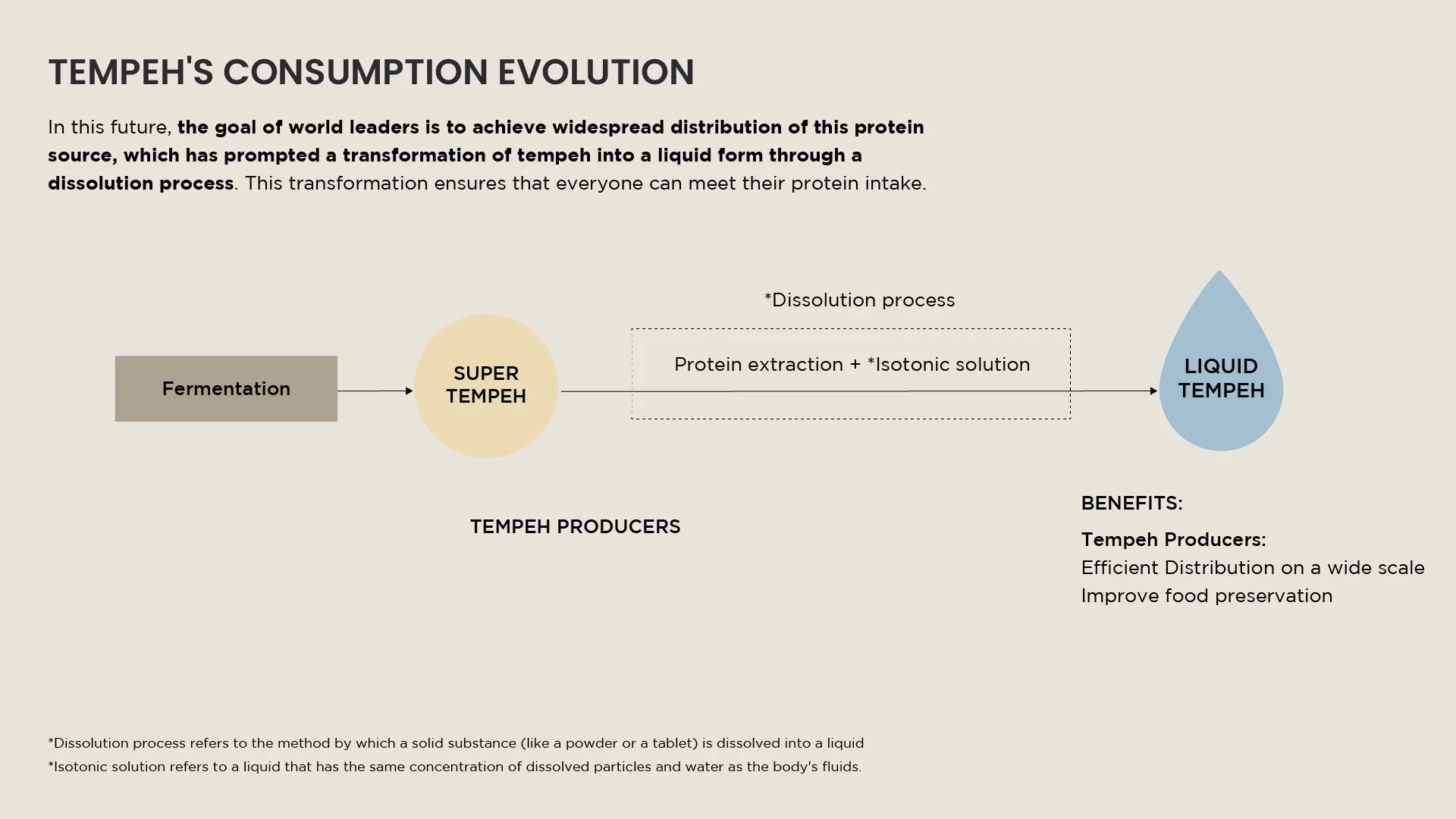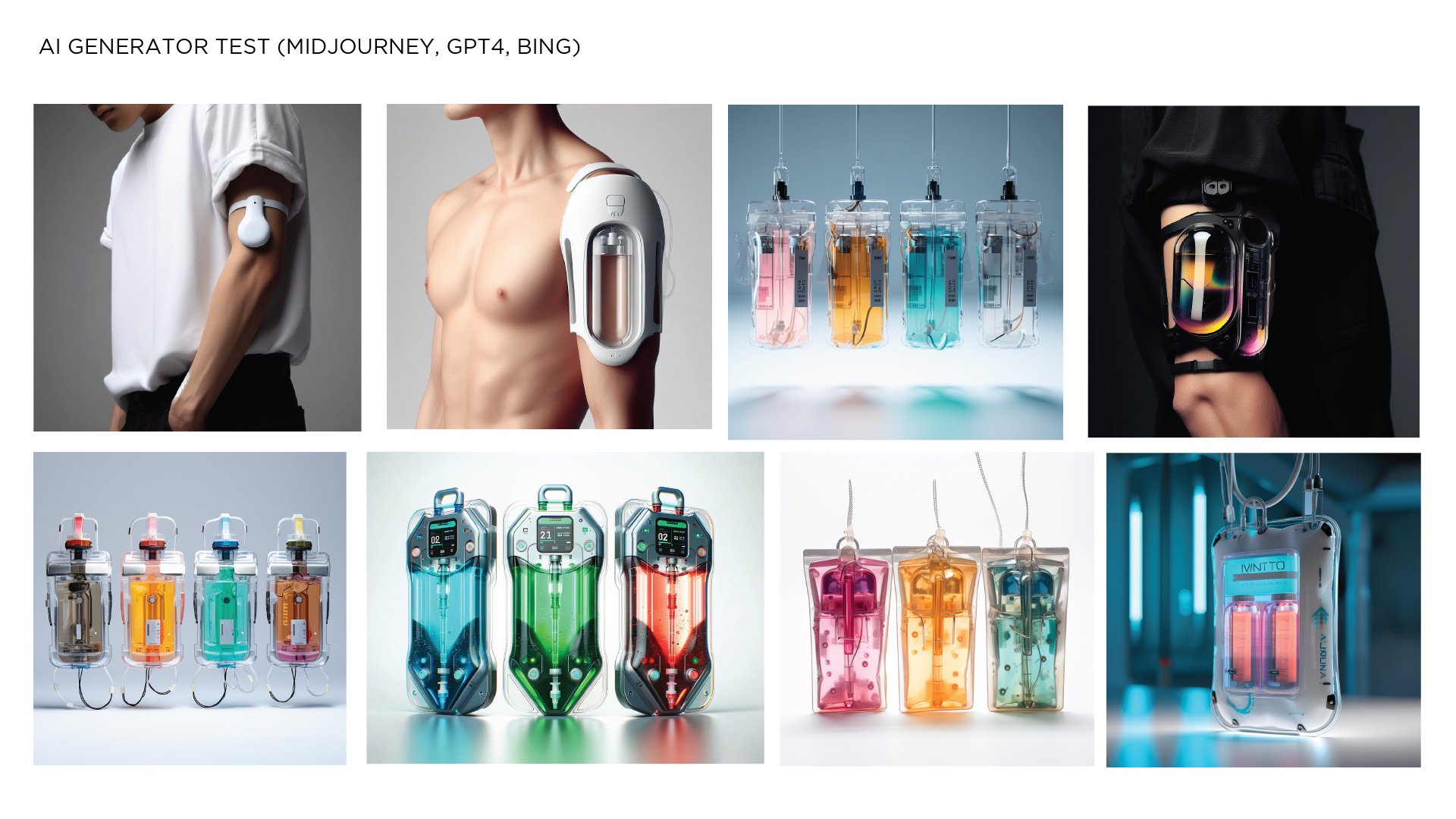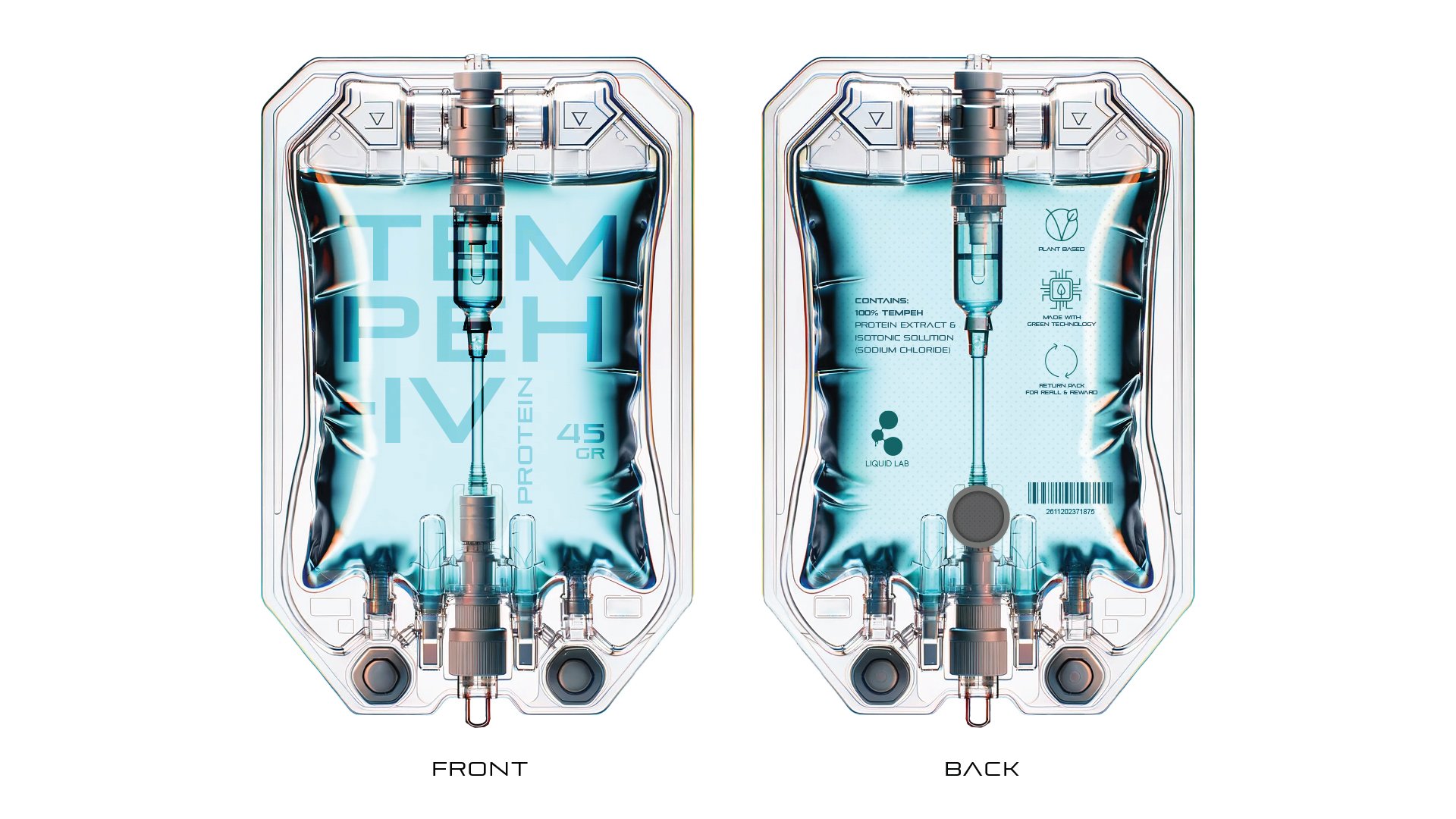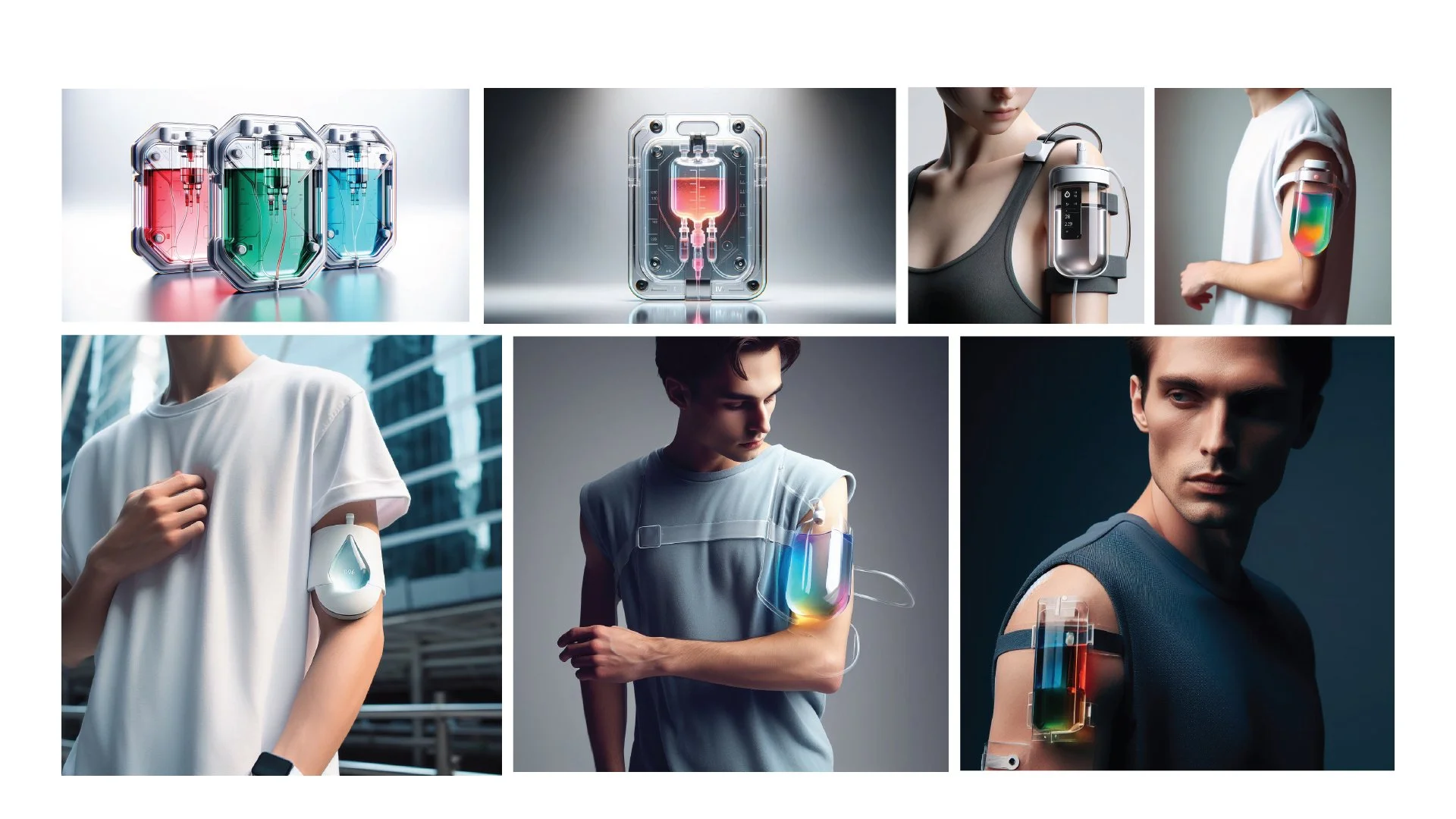
A speculative design envisioning the future of food.
TEMPEH-IV Pack
What if the answer to sustainable protein is closer than we think? This speculative design project envisions a possible future where tempeh, a humble and familiar food, is revolutionized by next-generation technology into a vital source of nourishment. TEMPEH-IV Pack imagines a world where meat-based protein is a thing of the past and where scientific breakthroughs and evolving lifestyles redefine how we consume protein, benefiting both people and the planet. It challenges us to see innovation and sustainability as partners in shaping the future of food.
In a time when we constantly seek new solutions, TEMPEH-IV Pack invites us to see that sometimes the answer is already here, waiting to be rediscovered. By reimagining the familiar through future scenarios, this project shows how creativity and thoughtful innovation can transform everyday ingredients into powerful solutions for a greener planet.
Produced at:
Media Design School, Postgraduate Design Studies.
Project Supervisors:
Dr. Sarah Elsie Baker
Andrew Blood
Shaun Payman
This case study explores my creative process in tackling a speculative design challenge, investigating the idea that innovation doesn’t always require creating something entirely new. Instead, I focused on uncovering new possibilities within existing ideas and rethinking how they could be applied. With a background in graphics, branding, and motion graphics, I began by developing future scenarios to guide and inform the design process.
I experimented with emerging generative AI tools to explore their role in my design workflow. Rather than using AI as a shortcut, I treated it as a collaborator, testing how it could suggest alternative directions and challenge my assumptions. This approach revealed new creative possibilities and raised questions about the relationship between human creativity and machine intelligence.
Background &
Issue:
“With our planet’s limited resources, we must feed a global population expected to grow to 9.7 billion by 2050. Currently, our inefficient food production and distribution system is unable to prevent widespread hunger, even as it takes a terrible toll on the environment.
Meanwhile, rich countries face an epidemic of diseases related to a diet of affluence and overabundance.” (Deloitte, 2022)
Through design futures and scenario-driven approaches, this project explores and prototypes experiences that provoke critical thinking about food futures. By examining possible scenarios, it encourages audiences to question current practices and imagine more sustainable and thoughtful ways of interacting with food.
Thought Process
This project began with a simple but persistent idea: tempeh. As I sat with the brief and began my research, I found myself continually drawn to this humble ingredient. It is something deeply familiar to me, rooted in my upbringing in Indonesia.
Tempeh, despite its rich cultural history and nutritional value, is still often overlooked in the global conversation around alternative proteins. In Indonesia, it is more than just a food. It is a staple in most households, often more accessible and widely consumed than meat. While meat represents luxury for some, tempeh is considered the people’s food.
What sparked my curiosity was not only its potential as a sustainable protein source but also how much of that potential remains untapped. This led me to ask how we might reimagine tempeh in the context of the future. Could it be elevated from a familiar everyday food to a central figure in a new food system?
These questions became the foundation of my speculative design exploration. They informed every decision I made, conceptually, visually, and strategically, as I set out to design a future where tempeh is not just relevant but revolutionary.
Discover more insights on this topic here.
How might we envision a future where a plant-based diet is the norm, with tempeh elevated as a primary protein source, and how could emerging technologies transform the way we produce and consume it?
Step into speculative scenarios.
Step into speculative scenarios.
Building My Speculative Future
In the early stages of this project, grounded in extensive research and speculative scenario development, I envisioned a future where tempeh plays a central role in global food systems. This future world, which I called Tempehtopia, explores tempeh beyond its traditional culinary forms by imagining it transformed into solid, liquid, and gas states. To bring this concept to life, I initially proposed an immersive 360-degree virtual reality experience that allows users to engage with these evolving forms in a multi-sensory environment.
Alongside this, I developed a detailed timeline of future scenarios to map the social, cultural, and technological changes required to realize such a future. Through iterative feedback and reflection, I refined the project to focus on a core speculative design artifact, a liquid tempeh product first named PRO-IV and later developed as the TEMPEH-IV Pack. This product serves as a tangible representation of the future possibilities explored in the research.
Refining the narrative to illustrate a plausible transition from today’s food landscape to this speculative future was both intellectually demanding and creatively stimulating. It challenged me to critically examine how emerging technologies and cultural practices might intersect to reshape our relationship with food and demonstrated how design can act as a catalyst for imagining and influencing future realities.
Early Concept Direction
Initial Scenario Construction
Preliminary Future Visions
Seeds of Tomorrow’s Technology
Emergent Techscapes: A Speculative Outlook
Prototype Development
A challenge in this project was developing the product prototype without a 3D modeling background. I investigated the potential of generative AI tools such as Midjourney, ChatGPT-4, and Copilot (Bing) as co-design tools to visualize my concepts.
Through this process, I recognized that generative AI tools offer valuable creative stimulus, often producing unexpected and inspiring results. However, when it comes to detailed and precise execution, the expertise of a skilled 3D artist remains crucial. The examples below illustrate how I integrated AI-generated concepts with hands-on refinement.
With the product concept in place, I moved into the storytelling phase by planning how it would be communicated through animation. I began by creating a design board to define the visual narrative and pacing, ensuring clarity in how the speculative product could be experienced. This process not only helped translate the idea into motion but also deepened my understanding of how visual storytelling can enhance engagement with future-facing concepts.
Initial Explorations in Generative AI
Design After Manual Refinement
Design Board (animation)
Initial Explorations in Generative AI
Visual Branding Development
Design Board (animation)



